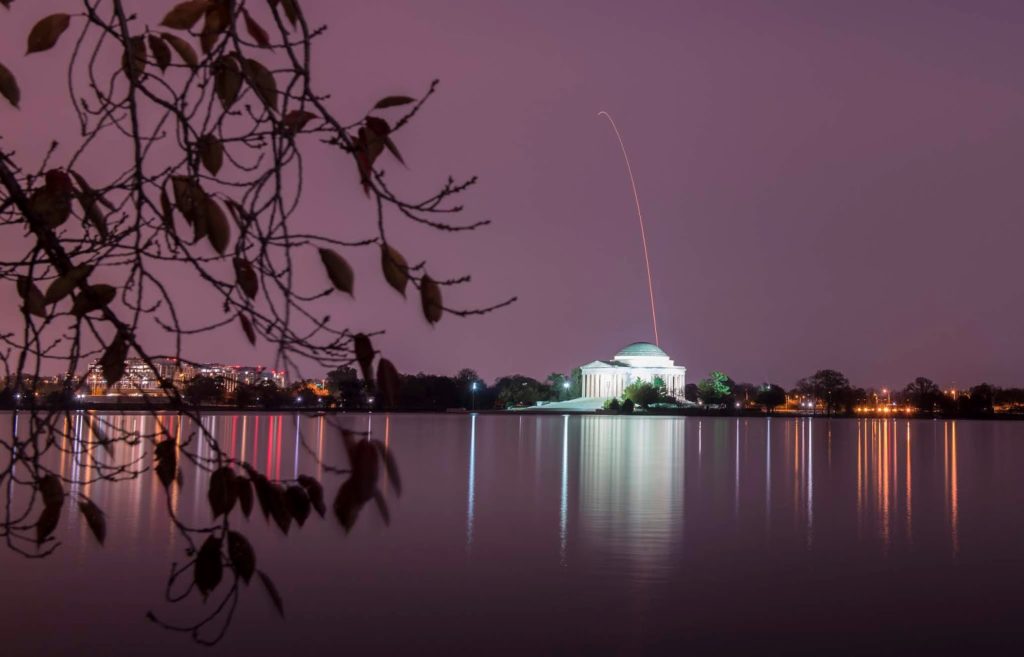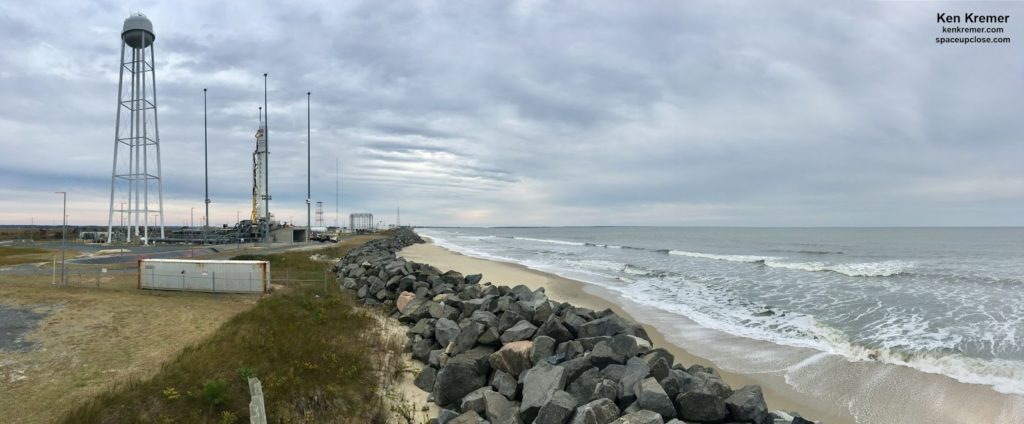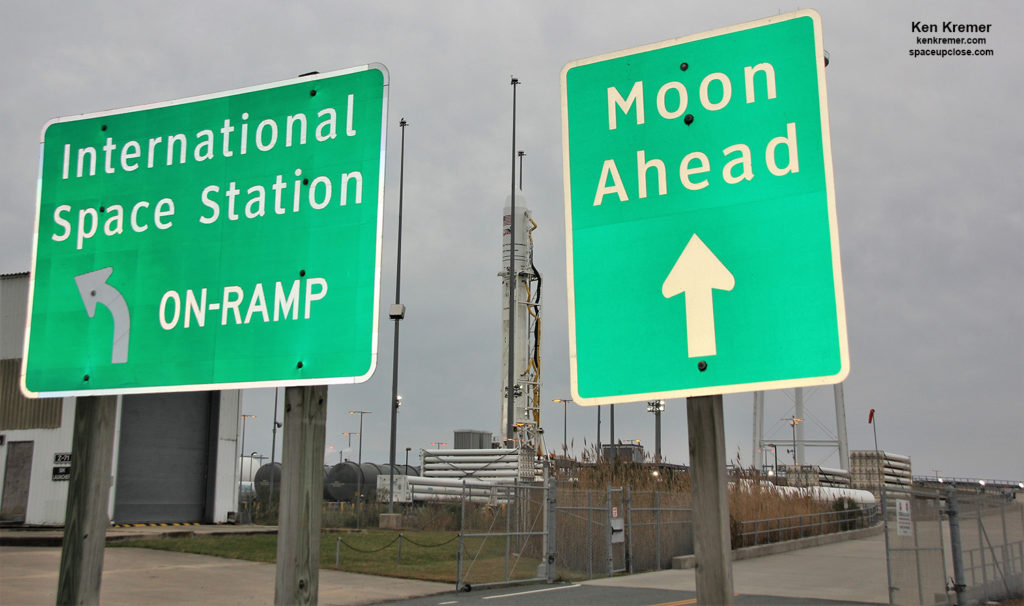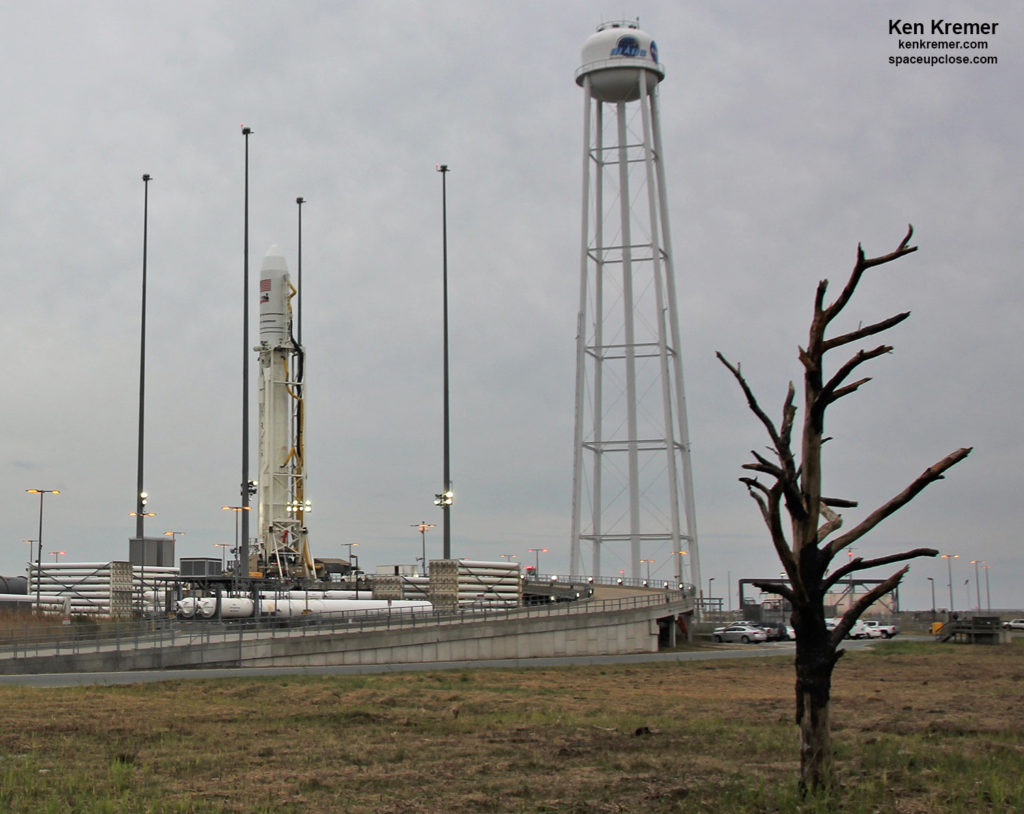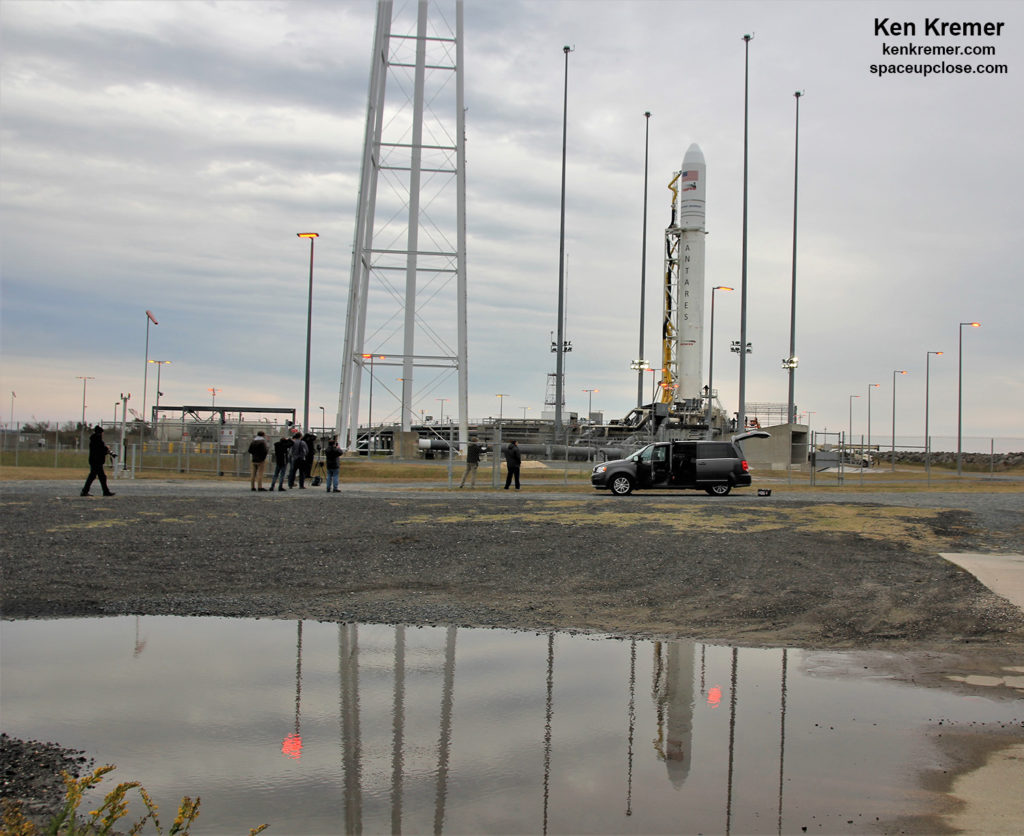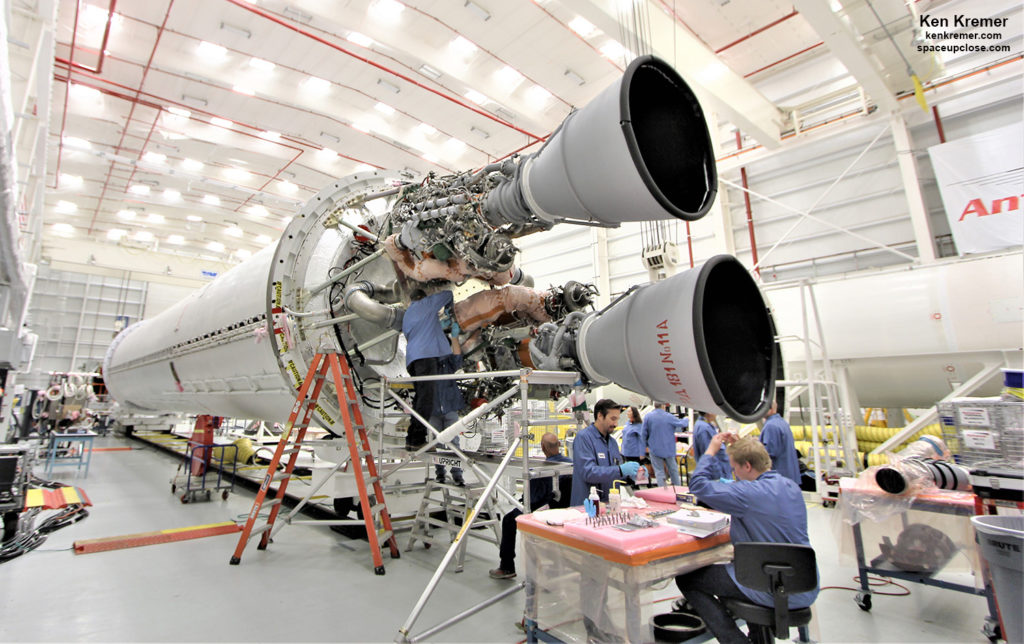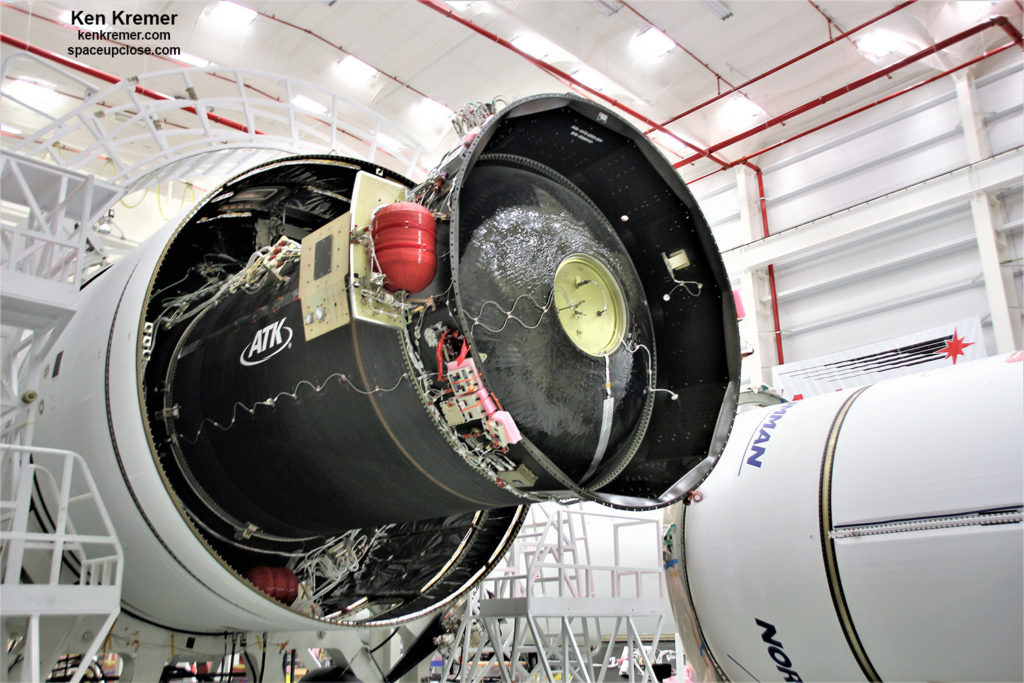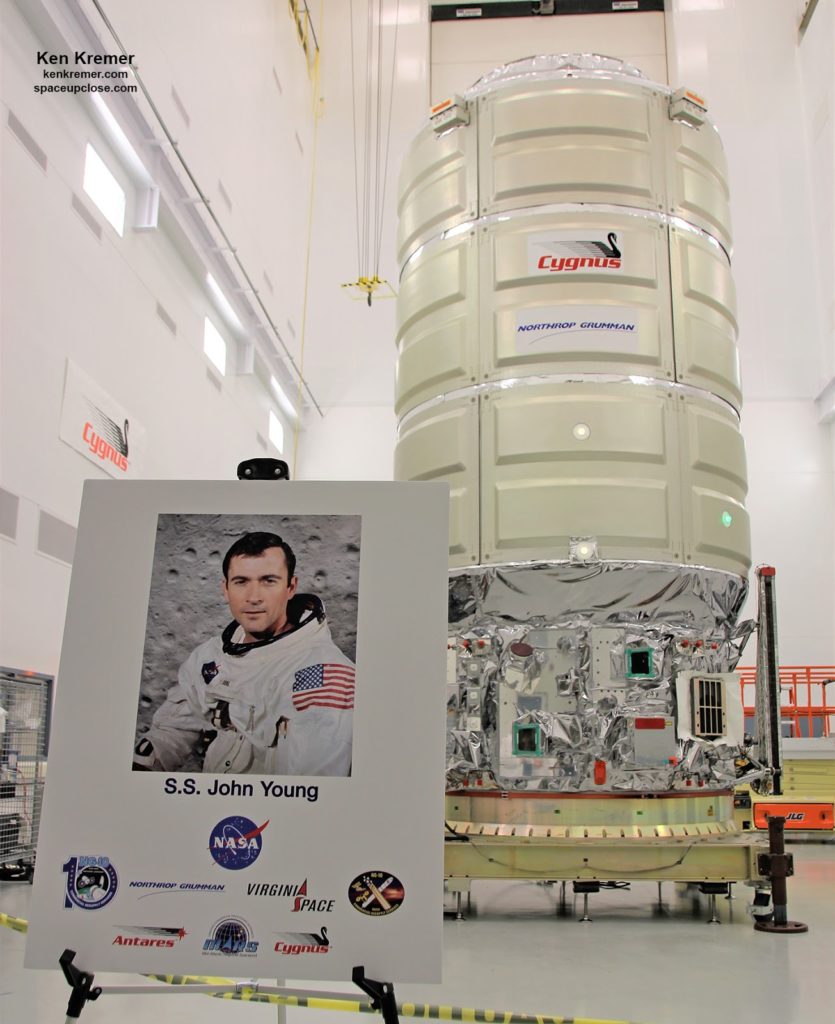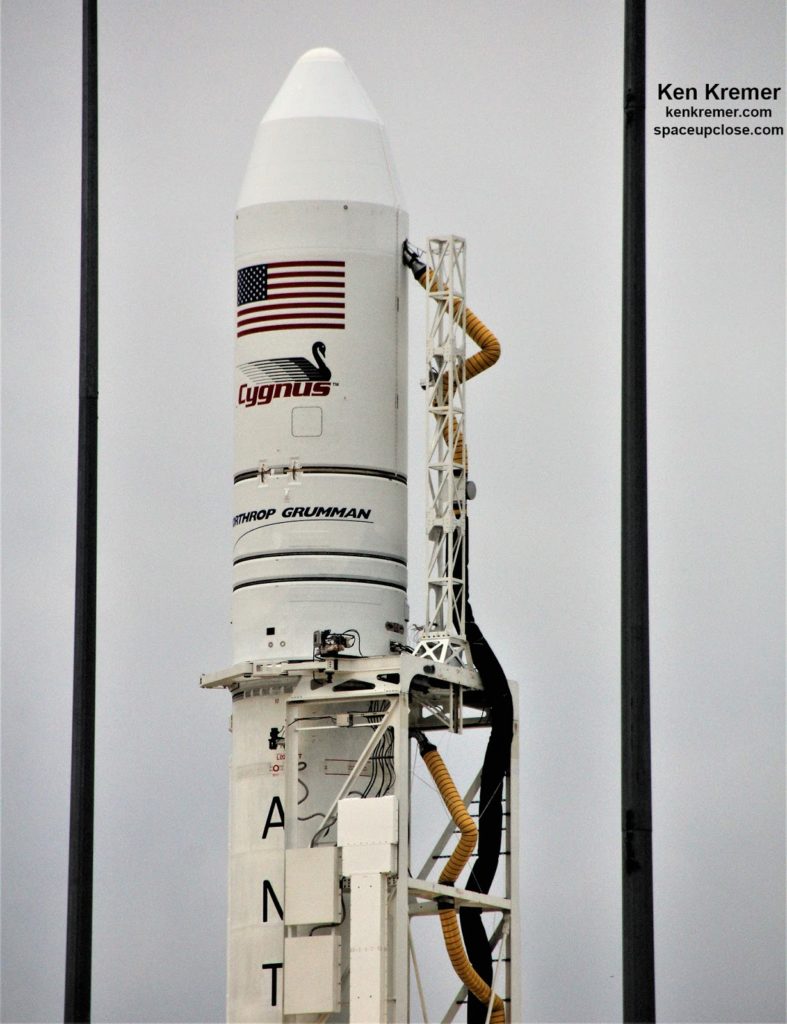Ken Kremer —SpaceUpClose.com
& RocketSTEM –17 November 2018
NASA
WALLOPS FLIGHT FACILITY, VA –The Northrop Grumman Antares commercial rocket put on a spectacular sky show with the middle-of-the-night
blastoff early Saturday, November 17 from Virginia’s Eastern Shore on a cargo
resupply mission bound for the International Space Station (ISS) carrying nearly
4 tons of science and supplies for the multinational crew – including the 1st
ever ‘recycling refabricator’.
Exceptionally
clear skies made for a stunningly beautiful soar to orbit visible for hundreds
of miles around – including Washington, D.C. – as seen in the long duration streak
shot above.
flawless liftoff of Northrop Grumman’s upgraded Antares 230 configuration rocket carrying the Cygnus
NG-10 supply ship took place right at the opening of the launch window at 4:01 a.m. EST on Saturday, Nov. 17, 2018 from seaside
pad 0A at NASA’s Wallops Flight Facility at the Mid Atlantic Regional
Spaceport in Virginia.
“The spacecraft is extremely healthy and
it’s ready to begin its trek to the ISS,” said Frank DeMauro, Northrop Grumman
VP advanced programs, during the post-launch briefing.
And the magnificent
launch finally came after a 48 hour delay due to drenching rainstorms and heavy
winds inundating NASA’s Virginia launch base.
ton of science and research is on board from delivery to the Space Station. In addition to the ‘Refabricator’ which will recycle
waste plastic bags into a 3D filament to make tools and hardware, other experiments will try to growing large crystals of an important protein (LRRK2)
related to the development of Parkinson’s disease for the Michael J. Fox
Foundation, examine the growth of crystals involved in cement solidification, situational
awareness of the astronauts perception of motion,
body position and distance to objects changes in space, the lab-on-a-chip (fully
automated, multifunctional cell culture platform) investigation looking at
skeletal muscle cells, and a dust zapping experiment related to the formation of the early
solar system.
of the life giving UltraFlex solar arrays that charge the ships batteries began
about 90 minutes after launch at 5:30 a.m.
The unfurling
process took about 30 minutes and was confirmed complete by NASA at about 6
a.m. The pair
of cymbal-shaped UltraFlex arrays are 12.1 feet (3.7 meters) in diameter.
Cygnus NG-10 marks the company’s 10th contracted cargo
delivery flight for NASA.
The Northrop Grumman Cygnus
cargo freighter now begins a carefully choreographed two day orbital chase with
a series of thruster firings setting up arrival at the station on Monday, Nov.
19.
Two of the Expedition 57 station astronauts Serena
Auñón-Chancellor of NASA and Alexander Gerst of ESA (European Space
Agency) will use the space station’s 57.7 foot (19.9 m) long Canadarm2 robotic arm to grapple Cygnus
about 5:20 a.m. Monday, Nov. 19
of the rendezvous, arrival, capture and berthing of Cygnus at the stations Earth-facing
port on Unity – orbiting some 250 miles (400 km) above Earth.
Installation coverage
will begin at 4 a.m. on NASA Television and the agency’s website.
The two
stage 139.4 foot (42.5 m) long Antares rocket was rolled out to pad OA around
midnight Tuesday from the NASA Wallops Horizontal Integration Facility (HIF) in
a downpour of rain for a 1 mile (1.6 km) trip to the pad and raised erect around
5 a.m. Nov. 13 EST.
“The move
was completed in a driving rain storm,” said Frank DeMauro, Northrop Grumman VP
for Human Spaceflight at the prelaunch briefing.
The trouble
free countdown started at T Minus 6 hours 15 minutes before liftoff.
Fueling
began at T Minus 1.5 hours with liquid oxygen (LOX) and RP-1 propellants.
14 story tall commercial expendable Antares launch vehicle is
launching in the upgraded and more powerful re-engined 230 configuration rocket
compared to the original version.
The first stage is powered by two newly built Russian-built
NPO Energomash RD-181 engines with independent thrust vectoring and fires for 3
minutes and 35 seconds before separating from
the upper stage. They are test fired by Energomash in Russia and shipped
to Wallops.
They produce about 860,000 pounds of thrust, roughly 100,000
more thrust than the original Antares 100 configuration. They are throttled
down at Max Q to maintain core integrity.
The second stage comprises the Castor 30XL solid
rocket motor producing approximately107,000 pounds of thrust. It burns
for about 156 seconds.
The two stage Antares measures 139 feet (42.5 m)
tall and 13 feet (3.9 m) in diameter.
It has a payload capacity of 18,000 pounds (8,000 kg) to
low Earth orbit (LEO).
Cygnus is loaded with cargo 3,350 kg (7,385 lb.) of cargo comprising
science experiments, research gear, food, water,
spare parts, crew supplies and vehicle hardware to support the Expedition 57 and 58 crews and over 250 new
and ongoing research investigations.
The Cygnus NG-10 cargo freighter, built by Northrop Grumman
Corporation, was christened the ‘S.S. John Young’ – in honor of astronaut John Young.
He was NASA’s longest serving astronaut
and passed away earlier this year in January at age 87.
was selected for NASA’s second astronaut class and flew during the Gemini,
Apollo and Space Shuttle programs. He walked on the Moon during Apollo 16 in
1972 and commanded the first space shuttle mission in 1981.
deliver nearly 4 tons of research experiments and station hardware and crew
supplies to the trio of astronauts and cosmonauts living aboard the orbiting
science outpost after blastoff atop the 2 stage Antares 230 version rocket.
resupply cargo mission for NASA.
Cygnus NG-10 which includes:
lbs. / 1,141 kg
lbs. / 3,273 kg
lbs. / 77 kg
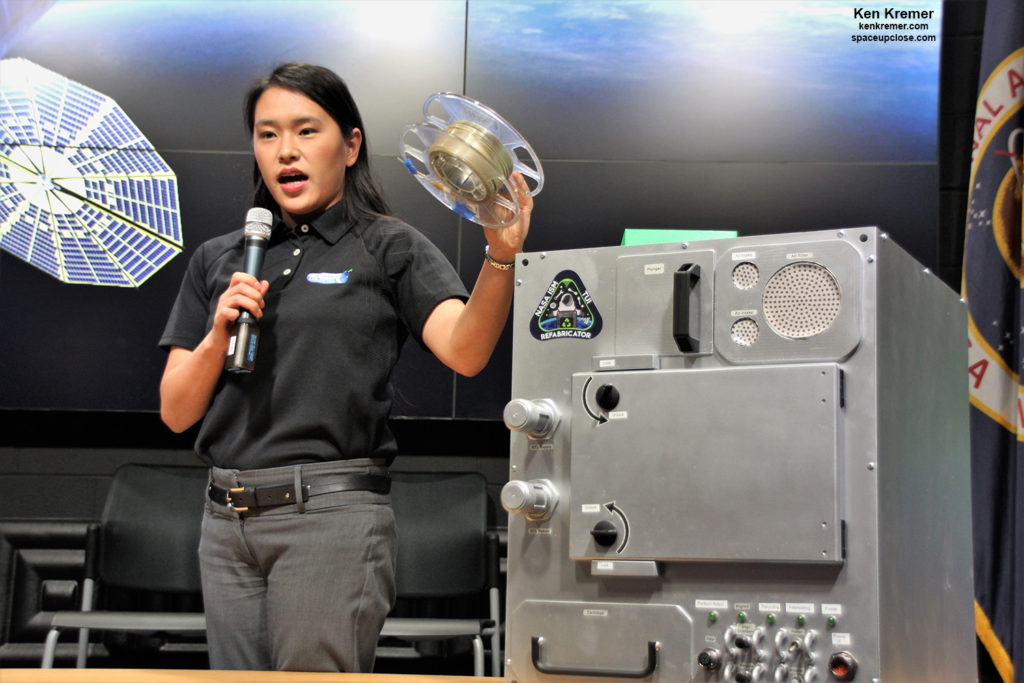 |
|
Dr. Allison Porter,
flight missions manager at Tethers Unlimited Inc., with a mock-up of the Refabricator, a combination 3D printer and recycler, headed to the International Space Station aboard NG-10. In Porter’s hand is a roll of 3D printer filament shown during the Nov. 13, 2018 science briefing at NASA Wallops. Credit: Ken Kremer/kenkremer.com/SpaceUpClose.com |
Watch this NASA video highlighting some of the
science including the ‘refabricator’:
Video Caption: A “Refabricator” for sustainable ♻ in-space manufacturing and a
multifunctional cell culture platform or “lab-on-a-chip” are just
some of the science investigations heading to the International Space Station.
They’re on board Northrop Grumman’s Cygnus resupply flight 10 (CRS-10),
launching in mid-November on the Antares rocket from NASA’s Wallops Flight
Facility. More: https://go.nasa.gov/2SVf82d. Credit: NASA
of the science and research experiments on board from NASA:
Recycling and Fabrication in Space
The Refabricator is the first-ever 3D printer and recycler
integrated into one user-friendly machine. Once it’s installed in the space
station, it will demonstrate recycling of waste plastic and previously 3D
printed parts already on-board into high-quality filament (i.e. 3D printer
‘ink’). This recycled filament will then be fed into the printer to make new
tools and parts on-demand in space. This technology could enable closed-loop,
sustainable fabrication, repair and recycling on long-duration space missions,
and greatly reduce the need to continually launch large supplies of new
material and parts for repairs and maintenance.
The demonstration, which NASA’s Space Technology
Mission and Human Exploration and Operations Directorates co-sponsored, is
considered a key enabling technology for in-space manufacturing. NASA awarded
a Small Business Innovation Research contract
valued to Tethers Unlimited Inc. to
build the recycling system.
Formation of the Early Solar System
The Experimental Chondrule Formation at the
International Space Station (EXCISS) investigation will explore how planets, moons and
other objects in space formed by simulating the high-energy, low-gravity conditions
that were present during formation of the early solar system. Scientists plan
to zap a specially formulated dust with an electrical current, and then study
the shape and texture of the resulting pellets.
Understanding Parkinson’s Disease
The Crystallization of LRRK2 Under Microgravity
Conditions-2 (PCG-16)
investigation grows large crystals of an important protein, leucine-rich repeat
kinase 2 (LRRK2), in microgravity for analysis back on Earth. This protein is
implicated in development of Parkinson’s disease, and improving our knowledge
of its structure may help scientists better understand the pathology of the
disease and develop therapies to treat it. LRRK2 crystals grown in gravity are
too small and too compact to study, making microgravity an essential part of
this research. This investigation is sponsored by the U.S. National Laboratory on the space
station, which Congress designated in 2005 to maximize its use for improving
quality of life on Earth.
mission of 2018 and one more is also planned by SpaceX on NET Dec. 4, said Joel
Montalbano, ISS Program deputy manager at NASA’s Johnson Space Center, at the
prelaunch media briefing at NASA Wallops.
Cygnus NG-10 will remain at the station for
approximately 3 months until February 2019.
Then it will unberth and depart and deploy a
series of cubesats and orbits above and below the ISS altitude at a safe
distance from the outpost.
Then it be commanded to a destructive reentry
into Earth’s atmosphere, disposing of several thousand pounds of trash.
This is the seventh flight of an enhanced Cygnus
spacecraft, and the fourth using Northrop Grumman’s upgraded Antares 230 launch
vehicle featuring new RD-181 engines that provide increased performance and
flexibility.
Cygnus will deliver
vital equipment, supplies and scientific equipment to the space station as part
of Northrop Grumman’s Commercial Resupply Services-1 (CRS-1) contract with NASA
– totaling 11 cargo flights.
“NG-10 is the next to
last followed by NG-11 next spring under the CRS-1 contract,” said Northrop
Grumman’s Kurt Eberly.
“Northrop Grumman also
has been awarded the follow-on CRS-2 contract from NASA comprising at least 6
more cargo missions.”
To date, Cygnus
spacecraft have delivered more than 23,000 kilograms of cargo to the
International Space Station, and removed 17,000 kilograms of disposable
cargo.
The
prior Cygnus cargo freighter was successfully launched by an Antares 230
vehicle from Wallops on May 21, 2018 on the Orbital ATK OA-9 resupply mission
for NASA before the company merged with Northrop Grumman.
Watch for Ken’s
continuing onsite coverage of NASA, SpaceX, ULA, Boeing, Lockheed Martin,
Orbital ATK and more space and mission reports direct from the Kennedy Space Center,
Cape Canaveral Air Force Station, Florida and Wallops Flight Facility,
Virginia.
and human spaceflight news: www.kenkremer.com –www.spaceupclose.com –
twitter @ken_kremer – email: ken at kenkremer.com
scientist and journalist based in the KSC area.
Ken’s photos are for sale and he is available for lectures and outreach events


